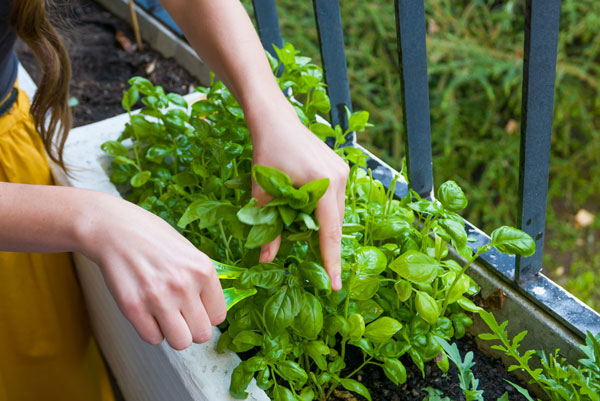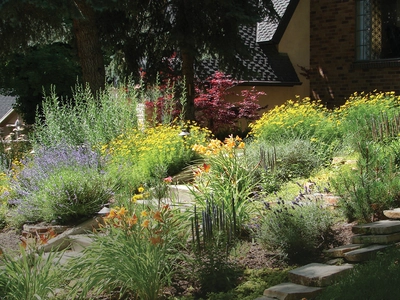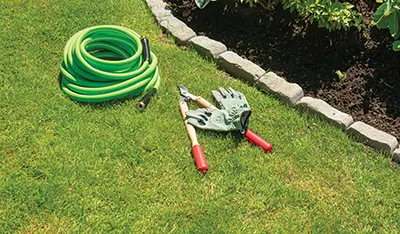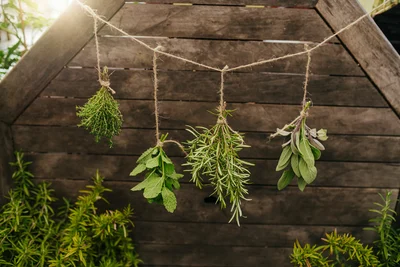
Written by Ingrid Hoff
The summer bounty is upon us and for me nothing quite beats the luxury of fresh herbs at my fingertips for my frequent whims of cooking inspiration.Most herbs are easy to grow and produce continuously throughout the summer months. If you find yourself in the situation where you have more than you can use this summer then consider drying your herbs to add to the spice cabinet. It’s easier than you think and tastier than anything bought from the grocery store.
While fresh herbs are bright and can add depth and flavour to your BBQ, salads or even drinks (summer foods), dry herbs are more intense with a concentrated flavour that makes them perfect for soups, stews, and roasts (fall/winter foods). However, there are herbs which do not lend themselves to drying. Basil, parsley, cilantro, mint, and chives are best eaten fresh, I find they lose their luster once dried. If you have a bumper crop of these herbs consider making pesto out of the basil, and you can also consider freezing the parsley, cilantro, and chives. Most other herbs lend themselves extremely well to drying.
Harvest
Pruning your herbs regularly promotes lovely compact growth so never fear getting out there and helping yourself to the bounty. Generally speaking, use a pair of sharp scissors and clip out stems back to a branch point or in the case of some herbs that don’t branch (parsley for example) all the way to the base of the plant. The best time of the day if you are harvesting a significant amount for drying is early morning after the dew has dried.
- If you are harvesting a plant for its leaves (sage, thyme, rosemary) then do a big harvest just before the plant starts to flower.
- If you are harvesting flowers (such as chamomile) then do it when most of the flowers are just starting to open fully.
- If you are harvesting seeds (dill, coriander) then make sure to wait until the seed heads are fully dry and the seeds can be shaken loose.
Drying
Herbs contain volatile oils (usually in their leaves), which is the source of their flavour, and the way in which you harvest and dry them is going to dictate how much of these oils you keep and how much is lost. Air drying is a slow and steady, highly effective method. By simply hanging small bundles of herbs in a warm, dark, dry place with good air circulation, all you need to do is wait and your herbs will dry with optimal potency and minimal input of effort/electricity. Also, they look really stylish.
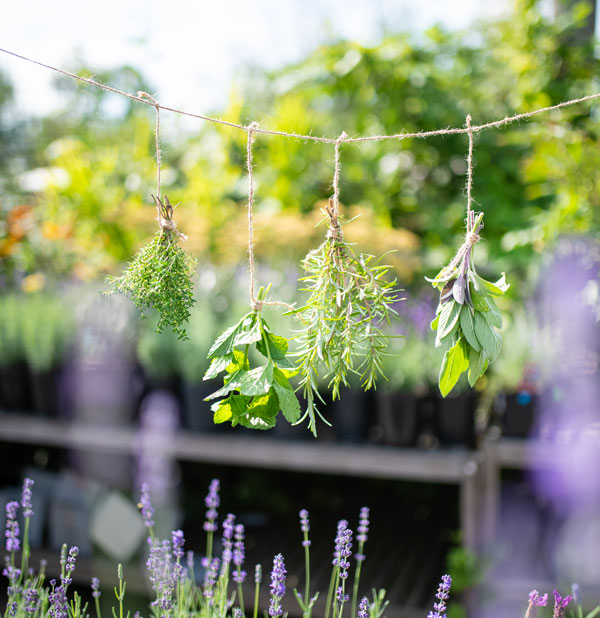
Air Drying
Make sure your herbs are dry before you create your bundles (you don’t want to trap moisture). Then make a small bundle, too large and you will get rot, and secure it with an elastic.
If you don’t like the idea of bundles, then you can always use a drying screen, which is exactly as it sounds, a screen to lay your herbs on to dry. One thing to remember is never put your herbs in direct sun as this can fade the colour and degrade the lovely oils of your herbs.
Check your herbs regularly as the drying time will depend on the herbs in question and the conditions of where they are drying. Once they are dry to touch and have a crumbly feeling, they should be good to remove from the stems and store for future use. I like to put the bundles into a paper bag and then give them a bit of a bash so the dried leaves fall in the bag. I will often leave them in the bag for a bit, just to make sure that all the moisture is gone, then transfer them into a spice jar or even a handy mason jar.
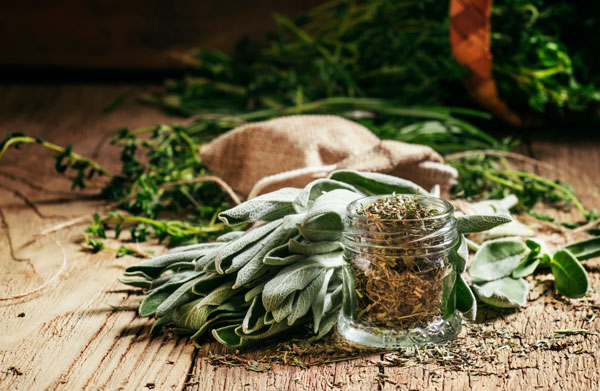
Top Drying Herbs
- Rosemary – the lovely pungent needle like leaves dry easily and maintain their flavour
- Thyme – a small leaved branched ground-cover that dries easily
- Sage – a larger leaved herb, make sure not to make your bundles too large to make sure you get good drying
- Oregano – a medium sized branching herb that is perfect for drying, and great in tomato sauce
- Marjoram – very similar to oregano, also very easy to dry
- Dill – the pungent leaves are small and delicate. Considering drying them in a paper bag but also collect the seeds which can be a great in pickling & homemade sauerkraut
- Chamomile – the beautiful daisy-like flowers are great for making tea
- Lemon balm – anyone who has grown this plant knows that you always seem to end up with too much, but the good news is it retains its lemony flavour even when dry
- Bay – a woody shrub with large leathery leaves that dry amazingly well

